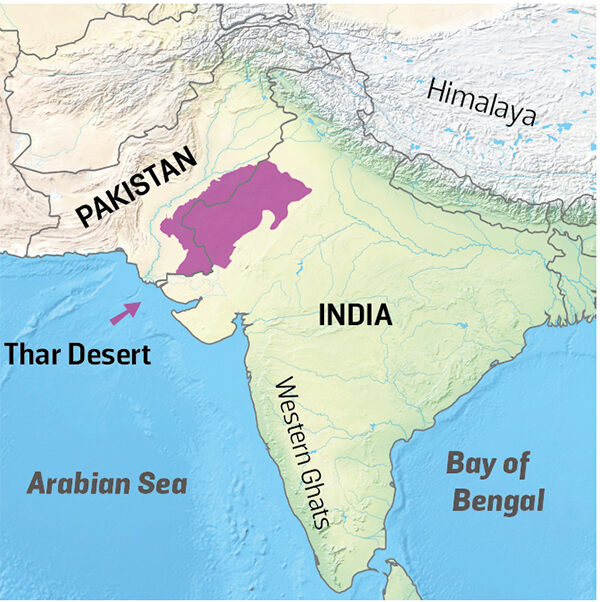Rajasthan
Climate Change May Lead to Greening the Thar Desert
- 29 Apr 2024
- 2 min read
Why in News?
According to a theory on rainfall and climate data, with a focus on the ‘Indian Ocean Warm Pool’ (IOWP), scientists have postulated that the Thar Desert could become greener due to global warming.
Key Points
- The presence of IOWP in the Indian Ocean has been recognised for many years and plays a role in the generation of monsoons. With the effects of global warming, the Indian Ocean Warming Pool is spreading towards the west.
- At IOWP’s western boundary, water evaporates and is pulled by the earth's rotation towards India, causing the northeast to receive rain for 150 days and the northwest for only 70 days.
- With the IOWP expanding westward, the ‘length of the rainy season’ would result in a 50-100% increase in the mean summer rainfall over the semi-arid northwest of India
- Essentially, the scientists argue that the Thar desert has the potential to experience ample rainfall and gradually become greener.
Thar Desert
- The Thar Desert, also known as the Great Indian Desert, is an arid region of rolling sand hills on the Indian subcontinent.
- It is one of the largest subtropical deserts in the world.
- It extends across the states of Rajasthan, Gujarat, and Haryana in India, and the provinces of Sindh and Punjab in Pakistan.
- It is bordered by the irrigated Indus River plain to the west, the Punjab Plain to the north and northeast, the Aravalli Range to the southeast, and the Rann of Kachchh to the south.
- The desert is separated from the Greater Rann of Kutch to the west by the low-lying marshy lands of the Luni River.







